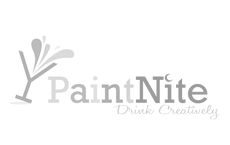Advertising through Pinterest is a combination of two of our favorite things! Pinterest allows users to collect and organize inspirational or lifestyle-oriented photos that pertain to their hobbies or passions. We have been patiently waiting for Pinterest’s big move to begin incorporating paid advertising, which Adweek reported is planned for as early as Q2![1] Paid pins will be targeted to users’ interests and will be marked differently than organic content.
The image provided below by Digiday illustrates how promoted pins will appear, with a clear icon spelling out the promoted content (see within the red outlined box), similar to Facebook and Twitter’s paid content marks:
In anticipation for the big move towards paid advertising in the platform, we did some digging into the history between marketing and Pinterest to get a better idea of what these changes may mean. What we found was that Pinterest has already been experimenting with the advertising realm since 2012 through a strategy called affiliate marketing.
Affiliate marketing is a performance-based advertising vehicle in which businesses give compensation to one or more “affiliates” for each new user that is reached from the affiliates own marketing efforts. Unbeknownst to the average user, Pinterest was automatically swapping out the links behind product pins, using a third-party service called Skimlinks with its own affiliate links. A pin that points to a product on Amazon, for instance, will direct the user through to the product page with a Pinterest affiliate code thrown in for good measure. Should that person actually make a purchase, Pinterest earns a referral fee.[2] NorBella Digital Buyer and avid Pinterest user, Lindsay Khouri was surprised to learn that Pinterest had been implementing this strategy, and wonders how much they have made off of her!
While we don’t know for sure how Pinterest’s shift to paid advertising will play out for brands, we do know that it will come at a hefty premium of almost $1M-$2M.[3] As we saw with affiliate marketing, we don’t think Pinterest’s switch to paid advertising will turn users off completely because the brands being pinned will (hopefully) relate to the user and the things they have shown interest in on the platform. The visual element of Pinterest offers a multitude of opportunities for brands and businesses to target their audiences in creative ways. We are excited to see what brands Pinterest will target us with!



